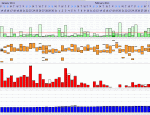Todzo wrote:ChicagoGranny wrote:Todzo
The absolute need, and I very much believe this should be required by law, for constant monitoring ALL of the time the PAP therapy is used. After doing my own monitoring for a couple of years I believe that anything less is simply medically irresponsible.
I believe many people do consistently well over a long period of time with a single CPAP pressure.
I don't blame you for treating yourself with Auto and plenty of data every day. But it is not necessary for everyone.
Prove it!!!!!! Peoples lives are at stake.
My above cry goes out not only to you but to all Medial Professionals, Equipment Manufacturers, Government Officials, and our society in general. This does affect us all. Anyone whose OSA is untreated or under treated is compromised as a productive member of society and rather becomes one who uses excessive medical and other resources.
Currently only 20% of those with OSA are known. Only 50% of those that are known and do try PAP can tolerate PAP as it is currently administered. Yet a company that uses constant PAP data feedback sees about 90% of their clients able to use it well.
Honestly, Chicago Granny, if you can find some good honest research that proves or disproves your point please do share it here! I have looked and it seems to be a case of almost willful ignorance. With the Polysomnogram, for example, I can find proof of the expected “first night effect” but no data that is taken night to night over a month or a year. I am very glad to see that at least two companies now make full Polysomnogram hardware that can be used in the home – so perhaps now we can get some long term data please? A test is useless if you do not prove that it works, and I am mindful that the Polysomnogram, being a one night deal - and that in a strange environment with emotions further cranked due to the cost, is likely compromised and I see no data that proves – long term night to night – that it is accurate. Since a good measure of the same hardware and data are used in the titration I do believe that this is part of that “only 50%” ability to tolerate PAP number and why the daily use of the PAP data and resulting adjustments tend to move that toward 90% when the PAP data is used.
Simply we need the long term tests to find out how much sleep varies night to night, week to week, month to month, season to season, year to year. Currently we are flying blind, and therefor we are not able to treat half of those with OSA and under treating many of those with PAP who can tolerate it.
I am happy to see things like the recent HomePAP study which showed that people actually do better when a Polysomnogram is not used but rather a home test (given a second night if the first night was false and a Polysomnogram if both nights are false) followed by a week long auto-PAP titration. Now, I am not at all surprised to see that a protocol which involves the night to night data for a week does better, not at all.
Honestly, one would think that researchers, strapped for cash and all as they ever are, would be clamoring to get all that available data which is currently taken every night. Yet, it seems that few doctors even make use of the data and I know of only one study that has made use of that data.
I know how useful it is since I have made use of it the last couple of years and have read of many others finding the same thing on the forums. As well, during a recent Dr. Park Expert Interview series he invited those who are successful using PAP to share the hows and whys. Use of PAP Data was universal!
If you feel the need to not argue with your husband over the kind of PAP used, well lets get him a smart brick whose data is gatherd automatically every night and checked for problems. He can have his cake and eat it too and you all can be a happy couple for a much longer time.
That is my vison for you and all,
Todzo













